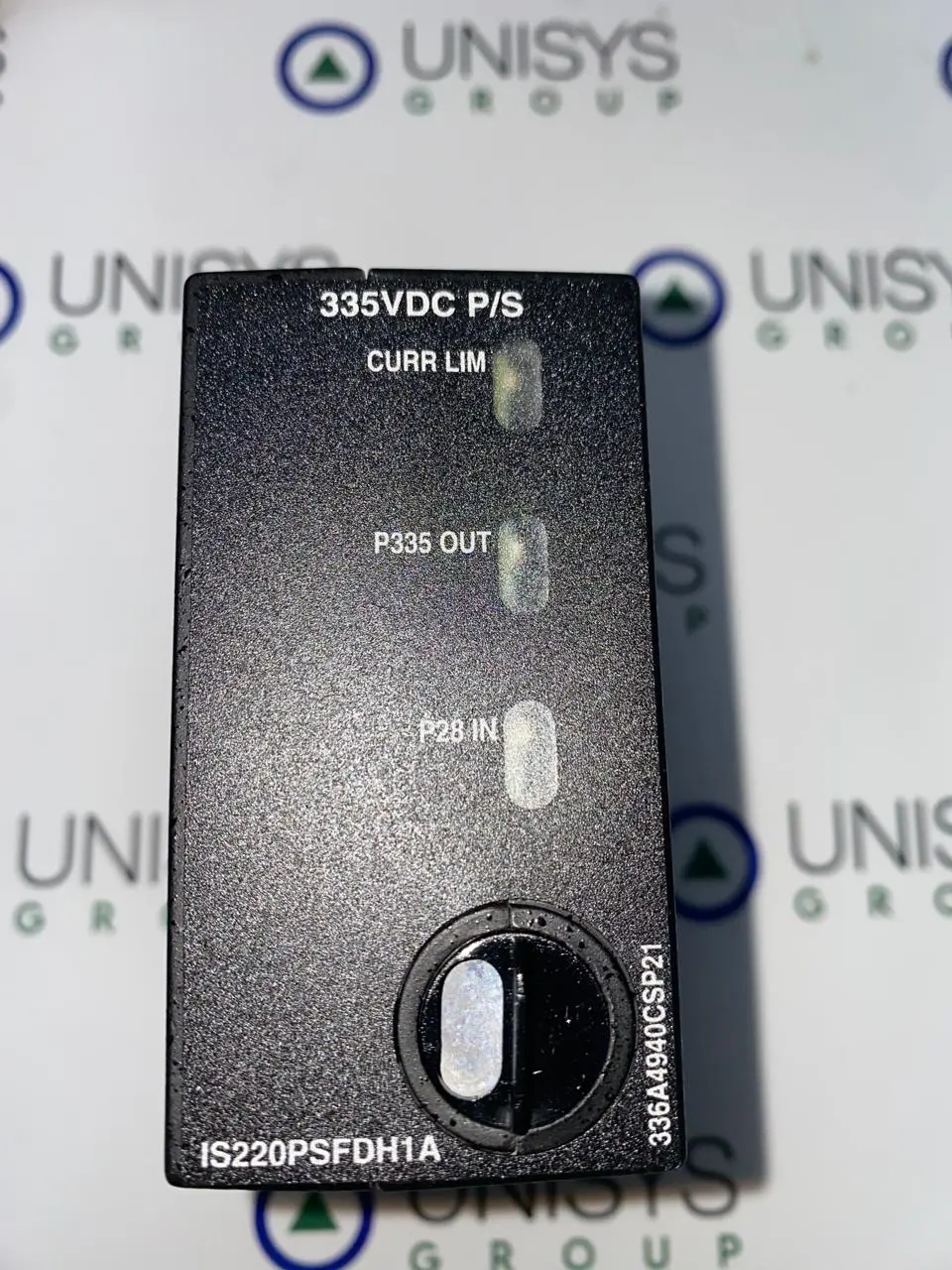



IS220PSFDH1A is a Flame Detector Power Supply manufactured by General Electric as part of the Mark VI Series used in gas turbine control systems. The primary gas turbine trip protection (TRPG) terminal board is normally mounted above the Flame Detector Power Supply (PSFD). A power distribution board provides 28 V dc as the source power (JPDL). 335 V dc, 5 mA is the output's rated rating. Up to eight flame detectors can be powered by three power supplies linked in a diode-ORed, TMR arrangement to the TRPG's J3, J4, and J5. Should the other two power supplies fail, each supply has enough power to operate all eight flame detectors.
The PSFD's primary characteristics are as follows:
INSTALLATION OF FLAME DETECTOR POWER SUPPLY
OPERATION:
The PSFD converts 28 V dc to 335 V dc. Current-limited and hot-swap compatible, the 28 V dc input. Transformer isolation separates the floating output from the input. A fixed ratio push-pull converter with an unregulated switching architecture is used. The input is also hot swappable, and the input and output are both current limited.
The 25 kHz switching power supply architecture is push-pull with no feedback or an open loop. According to the input voltage, the output rises and falls. The push-pull transformer has a 1:12 turns ratio to increase the 28 V dc input to 336 V dc. Diode drops further reduce the output voltage by 1.5 V dc, leaving 334 to 335 V dc. Because the power stage's current capacity is substantially higher than the necessary load current, the load control is still good even in this open loop design.
Both overcurrent and inrush current is protected by the input circuit breaker. The breaker modulates a series pass FET on and off during current limiting to reduce power loss. If connected to a P28 V dc bus that is active, the PSFD can be hot-plugged and won't interfere with other delicate loads. The fast-acting circuit breaker stops a short circuit from spreading across the 28 V dc bus if a circuit failure and short circuit happen downstream of the circuit breaker. The 28 V dc bus's exposure to noise is decreased by an EMI filter. After the input connector, a 33 V transform shields the PSFD from voltage spikes and errant reverse bias connections.
Even during a direct short, the output limiter limits the current to 7 mA. Even in an environment that is 65 °C (149 °F), the output can remain shorted indefinitely. At the output, transient protection is provided by a 385 V MOV.
DIAGNOSTICS:
A differential pair of test points allow for the local monitoring of the output voltage. A 100:1 attenuator that is referred to as the chassis for security connects the positive and negative test points to the positive and negative outputs, respectively. There is no risk of electric shock when touching any test site. In addition, a permanent short to the chassis is possible at each test point. Both TP POS (inboard) and TP NEG are used to identify the test points (outboard). Rotating the top round plastic cover will allow you to reach the test spots.
Three status LEDs are seen on the PSFD:
The input and output LEDs only signal the existence of input or output voltage and do not represent any specific voltage level. Similar to the voltage limit LED, the current limit LED does not measure the over-current magnitude and is just intended to serve as an indication. The signal path for the activation signal and the current limit LED are connected in series. In the event that the current limit LEDs malfunction open, a circuit gets around the LED and the limiter keeps working.
Each PSFD's output voltage is attenuated and detected on the TRPG terminal board. The PTUR I/O pack continuously monitors the measured voltage. An alarm is announced in the ToolboxST program or Alarm Viewer in a TMR system if any one of the three PSFDs cannot supply 335 V dc.